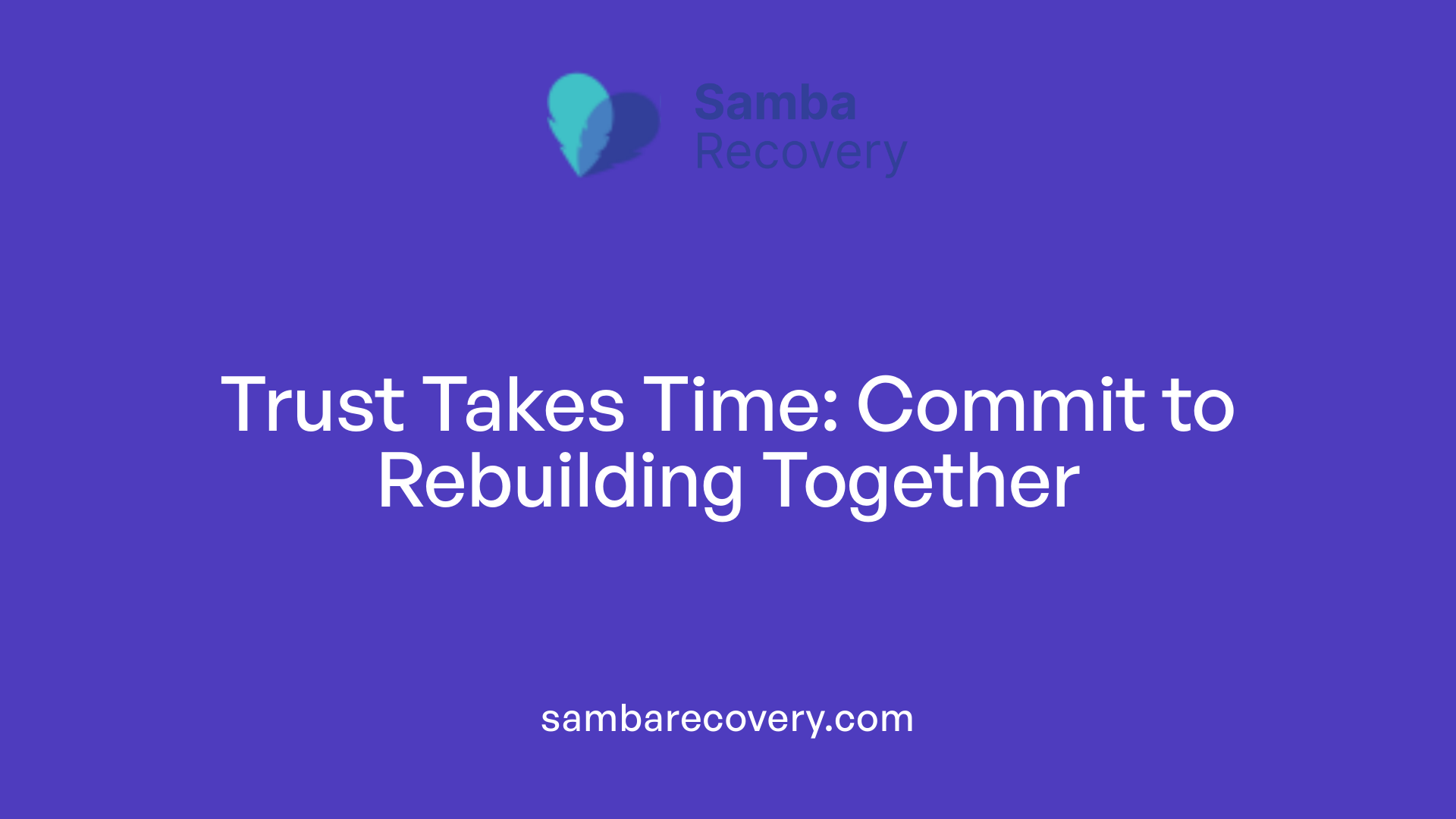How to Navigate Family Dynamics After Treatment
April 14, 2025
Rebuilding Family Connections Post-Treatment: Strategies and Insights

Understanding the Terrain
After undergoing treatment for addiction or health issues, reintegrating into family dynamics can be a complex journey. Each family member is at different stages of healing, and navigating these relationships requires careful consideration. This article provides a roadmap for families to foster healthy interactions, emphasizing communication, boundaries, and the transformative role of therapy during recovery.
Healing from Toxic Family Dynamics

How can families heal from toxic dynamics?
Families can initiate healing from toxic dynamics by first identifying the root causes, which may include issues like marital discord, financial difficulties, and mental health struggles. Recognizing these underlying factors enables family members to better understand each other’s perspectives during the healing process.
Importance of open communication
Open communication becomes crucial in this context. It allows family members to voice their feelings and grievances without fear of judgment, facilitating a safer and more empathetic environment for discussions. This exchange lays the groundwork for rebuilding trust and promoting understanding.
Role of family counseling
Engaging in family counseling can play a pivotal role in healing. Specialized guidance helps steer communication toward constructive interactions, while a therapist can assist families in navigating complex emotions and dynamics peacefully. Counseling sessions create a structured space where family members can work collaboratively on their relationships.
Setting boundaries and practicing forgiveness
Setting clear boundaries is also essential to ensure everyone’s emotional health is safeguarded. It enables individuals to prioritize their recovery and wellness. Practicing forgiveness, when possible, can not only alleviate past grievances but also foster a spirit of renewal and hope for improved family interactions in the future.
Navigating Family Conflict Effectively

Recognizing Family Conflict as Normal
Family conflict is a natural part of family life. It's essential to acknowledge that disagreements will arise, especially during times of significant change, such as post-addiction treatment. Recognizing this reality is the first step in managing family dynamics effectively.
Strategies for Managing Emotions and Active Listening
When navigating conflicts, staying calm is crucial. Keeping emotions in check allows for clear communication. Here are some tips:
- Practice Active Listening: Focus on understanding what others are saying without planning your response while they talk.
- Express Yourself Honestly: Use "I" statements to articulate your feelings without placing blame, which encourages openness.
Seeking Compromise and Professional Help
Finding common ground can ease tensions. Here, negotiations can be effective. If disputes escalate, it might be beneficial to seek professional help. Counselors can provide tools to improve communication and address unresolved issues constructively. A structured approach can help redefine family roles, set boundaries, and foster a supportive environment for everyone involved to heal together.
| Strategy | Description | Benefits |
|---|---|---|
| Active Listening | Listening attentively without interrupting | Enhances understanding and reduces misunderstandings |
| "I" Statements | Communicating feelings personally | Minimizes defensiveness and promotes open dialogue |
| Seeking Compromise | Negotiating to find common ground | Fosters cooperation and reduces ongoing conflict |
| Professional Help | Involving a counselor or therapist | Provides tools for conflict resolution and clearer communication |
The Crucial Role of Family Therapy

What Role Does Family Therapy Play in Recovery Processes?
Family therapy is an integral component of recovery from addiction, addressing the dynamics within the family that contribute to substance abuse and its consequences. It’s essential for mending relationships that have been strained by addiction, laying a foundation for improved long-term sobriety and lower rates of relapse.
Addressing Family Dynamics in Therapy
This therapeutic approach involves educating family members about addiction, fostering discussions about personal experiences, and encouraging open communication. By understanding each other’s emotions and reactions, families can work towards healing.
Repairing Relationships Affected by Addiction
Effective family therapy creates a safe space where both the recovering individual and their loved ones can express feelings, frustrations, and aspirations. This mutual exploration helps rebuild trust and fosters a supportive atmosphere conducive to recovery.
Components of Effective Family Therapy
Key components include:
- Education: Teaching families about substance use disorders.
- Communication Enhancement: Implementing active listening techniques and expressing needs and feelings clearly.
- Emotional Support: Providing reassurance and understanding to one another as they navigate this journey together.
By engaging all family members in therapy, the process equips them with the tools needed to maintain a nurturing environment, enhancing the potential for lasting recovery. This collaborative effort is essential not just for the individual but for the family unit as a whole.
Impact of Family Dynamics on Health Outcomes
How can family dynamics impact health and recovery outcomes?
Family dynamics wield significant influence over health and recovery outcomes, operating through various psychosocial, behavioral, and physiological pathways.
Supportive versus Dysfunctional Relationships
Supportive family relationships nurture effective coping mechanisms, fostering resilience in individuals facing health challenges. Positive interactions can lead to better sleep quality and improved emotional stability. Conversely, dysfunctional relationships often escalate stress and emotional distress, leading to chronic health issues. In cases of addiction, for instance, unresolved conflicts can hinder recovery efforts, making the journey more difficult and contributing to potential relapse.The Role of Open Communication
Open communication plays a crucial role in facilitating healthy family dynamics. Families who engage in honest discussions are better equipped to understand each other's needs and emotions, promoting unity and support. This understanding can result in cooperative decisions that prioritize the health and recovery of family members.Addressing Family Dynamics in Healthcare
Healthcare practitioners must recognize the significance of family dynamics in treatment plans. Involvement of family members in therapeutic processes, like family therapy, is often beneficial. It helps address negative patterns and fosters an environment conducive to healing. By understanding and actively addressing family dynamics, healthcare providers can enhance overall well-being and support individuals in achieving their recovery goals.
| Aspect | Positive Impact | Negative Impact |
|---|---|---|
| Family Support | Increased resilience, improved coping | Heightened stress, emotional distress |
| Communication | Enhanced understanding and unity | Misunderstandings, conflicts |
| Healthcare Response | Comprehensive treatment strategies | Oversights in patient needs |
Setting Healthy Boundaries Post-Treatment

Importance of boundaries in recovery
Establishing healthy boundaries is crucial for individuals in recovery from addiction. Boundaries serve to protect emotional health and ensure that recovering individuals can focus on maintaining their sobriety. After treatment, family dynamics may still be strained, leading to potential triggers for relapse. Clear boundaries allow a person to prioritize their recovery journey without being overwhelmed by dysfunctional interactions or pressures from family members.
Techniques for establishing and communicating boundaries
Creating effective boundaries involves several techniques:
- Write down boundaries: This can help clarify what is acceptable and what is not in relationships.
- Practice expressing boundaries: Role-playing conversations can prepare individuals for real-life discussions.
- Use ‘I’ statements: Framing conversations around personal feelings helps convey boundaries without sounding accusatory.
- Stay calm and composed: When discussing limits, it's important to remain calm to foster productive dialogues.
Role of boundaries in preventing relapse
Setting and maintaining boundaries is essential not only for individual well-being but also in preventing relapse. By establishing limits with family members, the recovering individual minimizes stressors that could lead to cravings or triggers. Furthermore, boundaries help family members understand their role in the recovery process, promoting mutual respect and support for long-term healing.
Rebuilding Trust and Connections

Strategies for rebuilding trust within the family
Rebuilding trust within a family post-addiction treatment takes time and effort from all parties involved. Here are some strategies to enhance this process:
- Open Dialogue: Encourage family members to express feelings and concerns openly. This creates an atmosphere where honesty is valued.
- Acknowledge Past Hurts: Recognizing and validating previous issues can help address lingering trauma, allowing for genuine healing.
- Set Realistic Expectations: Understand that trust-building is a gradual process; do not expect immediate results.
Consistency and reliability in family interactions
Establishing consistency in interactions is crucial for rebuilding trust. Family members should:
- Follow Through on Commitments: Keeping promises reassures others of reliability.
- Be Transparent: Sharing thought processes and feelings can promote clarity and understanding.
- Practice Active Listening: Show that you value each family member's perspective, fostering deeper connections.
Activities to strengthen family bonds post-treatment
Engaging in shared activities can help reinforce family bonds during recovery. Consider:
- Regular Family Meals: These provide opportunities for casual conversation and connection.
- Outdoor Adventures: Participating in hikes or picnics can foster teamwork and create joyful memories.
- Family Therapy Sessions: Targeted therapy can develop communication skills and strengthen relationships.
Implementing these strategies in the post-treatment environment can create a nurturing atmosphere for all family members.
The Significance of Communication in Recovery
Role of communication in healing
Effective communication is essential in navigating post-treatment family dynamics. It fosters understanding and can significantly aid in the healing process for both the individual in recovery and their family members. Open dialogues allow for expressing feelings, voicing concerns, and addressing historical issues that have influenced relationships.
Active listening and speaking techniques
To cultivate a supportive atmosphere, family members should practice active listening. This involves fully focusing on what the other person is saying, responding thoughtfully, and acknowledging their feelings. Using ‘I’ statements can also be helpful; for example, saying "I feel concerned when..." promotes a non-confrontational approach and encourages empathy.
Encouraging open dialogues in the family
Creating opportunities for open discussions within the family promotes emotional safety. Regular family meetings can provide a platform for everyone to express their needs and opinions, which is crucial in rebuilding trust and fostering healthy interactions. With patience and practice, families can learn to communicate effectively, ultimately improving their relationships and supporting recovery.
Moving Forward Together
Navigating the intricate web of family dynamics post-treatment requires effort from all parties involved. By focusing on open communication, establishing clear boundaries, engaging in family therapy, and understanding the profound impact of family relationships on health, families can support each other more effectively. The journey may be challenging, but with the right strategies and support, it's possible to rebuild connections and create a nurturing environment conducive to sustained recovery.
References
- How To Navigate Family Relationships After Treatment
- Coping with Family Dynamics in Recovery
- Navigating Parent-Child Relationships Post-Residential Treatment
- Coping – Family Issues after Treatment - NCI
- Navigating Family Dynamics During Inpatient Treatment
- Navigating Family Roles During a Loved One's Residential Treatment
- 4 Ways to Navigate Difficult Family Dynamics at End-of-Life
- 5 Steps to Healing if a Family Member Won't Change
- Managing Family Dynamics - Leeza's Care Connection
- Family Dynamics - StatPearls - NCBI Bookshelf
About Samba Recovery
Start your treatment today!

Featured Articles
Read the latest addiction news and recovery tips from our blog.
Samba Recovery never miss an opportunity
Substance abuse doesn’t have to be a life sentence! Sustainable recovery is possible and the best version of youself awaits at our Atlanta and Savannah, Georgia addiction recovery center.
We’ll help you learn that the opposite of addiction is connection. We’ll give you skills to discover your self-worth and show you the tools for a life of hope and promise.
Contact us today!
We accept most major insurances
We partner with most major insurances, enabling you to access premier therapy services.









































































































